If your Dieffenbachia is falling over, it’s likely due to one of several reasons. The most common cause is that the plant is top-heavy and needs to be staked. Other causes can include root rot, insufficient light, or too much water. Luckily, there are solutions for all of these problems. Read on to learn more about why your Dieffenbachia is falling over and what you can do to fix it.
6 Causes of Dumbcane Falling Over and Solutions
Dumbcane plants, also known as Dieffenbachia, are popular houseplants because they are easy to care for and tolerate low light conditions. However, dumbcane plants can sometimes fall over, due to a variety of reasons.

One common reason for dumbcane plants to fall over is that they are not getting enough light. To fix this, simply move your plant to a brighter location. If your dumbcane plant is not getting enough light, it will start to lean towards the light source in an attempt to get more light.
If your plant is getting too much water, the roots will start to rot, causing the plant to become top-heavy and fall over. To fix this, make sure you are only watering your plant when the soil is dry to the touch. Another common reason for dumbcane plants to fall over is that they are overwatered.
If your dumbcane plant is falling over due to one of these reasons, simply adjust your care routine accordingly and your plant should start to recover.
Lack of Ample Light
If your plant is placed in too much shade, it will become leggy and weak, causing it to fall over. Dieffenbachias need bright, indirect sunlight to thrive. If your Dieffenbachia is falling over, it’s likely because it’s not getting enough light.

To fix the problem, move your Dieffenbachia to a brighter spot. If possible, place it near a south- or west-facing window. Just make sure your plant is getting enough light to stay upright. If direct sunlight is too strong, you can diffuse it with a sheer curtain.
Skinny Growth
One possible reason for your Dieffenbachia’s sudden and dramatic growth is that it is experiencing a growth spurt. This can be caused by a number of factors, including changes in temperature, humidity, or light. If you notice that your Dieffenbachia is growing faster than usual, be sure to check its environment and make sure that all of its needs are being met.
Another possibility is that your Dieffenbachia is simply getting too big for its pot. Be sure to use a pot that has drainage holes to prevent root rot. If you think this might be the case, try replanting your Dieffenbachia in a larger pot. When plants outgrow their pots, they often become top-heavy and fall over.
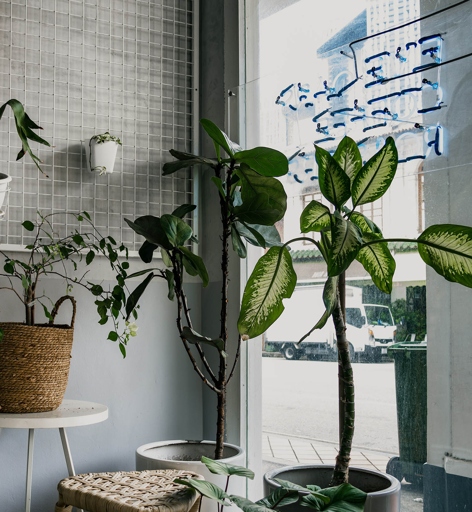
Common problems that can cause Dieffenbachias to topple over include root rot, stem rot, and mealybugs. If you suspect that your plant is sick, take it to a local nursery or plant clinic for diagnosis and treatment. If your Dieffenbachia is still falling over, even after you’ve checked its environment and made sure it has a proper pot, it’s possible that it has a disease or pest problem.
Smaller Leaves
Another reason for a Dieffenbachia to fall over is that the roots are not getting enough support. One of the most common reasons for a Dieffenbachia to fall over is that the leaves are too heavy. The roots of a Dieffenbachia are quite fragile, and if they are not supported properly, they can cause the plant to topple over. The leaves of a Dieffenbachia can get quite large, and if they are not supported properly, they can cause the plant to topple over.
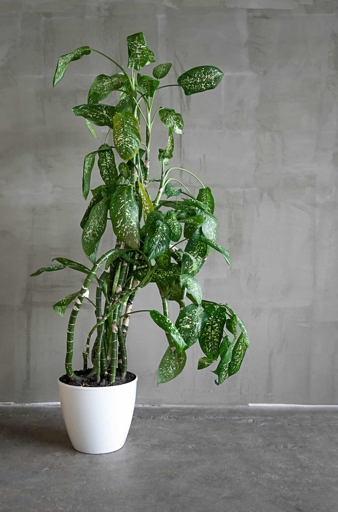
If you think that your Dieffenbachia is falling over because the roots are not getting enough support, you can try to repot the plant into a larger pot. If you think that your Dieffenbachia is falling over because the leaves are too heavy, you can try to support the leaves with stakes or trellises.
Wet Soil
If you notice your Dieffenbachia is starting to fall over, it’s likely due to wet soil. The best way to solve this problem is to make sure the soil is evenly moist. If the soil is too dry, the plant will start to wilt. If the soil is too wet, the plant will start to fall over. Dieffenbachias are native to tropical regions and prefer soil that is constantly moist. Water the plant when the top inch of soil is dry. If the plant is still falling over, you may need to repot it in a pot with drainage holes.
Bending Towards the Light
When your Dieffenbachia starts to fall over, it’s a sign that it’s not getting enough light. Dieffenbachias are native to the tropical rainforests of Central and South America, so they need bright, indirect light to thrive. If your Dieffenbachia is placed in too dark of a spot, it will start to lean towards the light in an attempt to get the light it needs.

Once your Dieffenbachia is getting the light it needs, it will start to stand up straight again. If possible, place it near a window where it will get plenty of indirect sunlight. To fix the problem, simply move your Dieffenbachia to a brighter spot.
Place the grow light about 12 inches above the Dieffenbachia and leave it on for 12-14 hours per day. This should give your Dieffenbachia the light it needs to start standing up straight again. If you can’t move your Dieffenbachia to a brighter spot, you can try increasing the light it’s getting by adding a grow light.
How to Provide Dumb Cane with Ample Light
Dumb cane (Dieffenbachia) is a popular houseplant because it is easy to care for and tolerant of low light conditions. However, if you want your dumb cane to thrive, it is important to provide it with ample light.
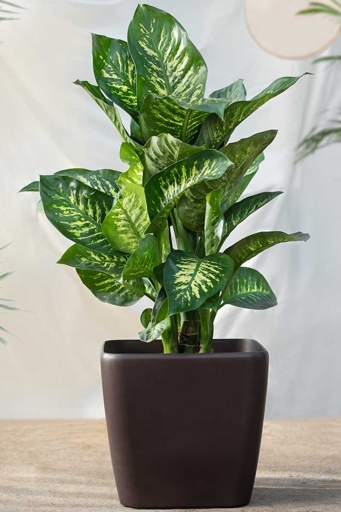
If the leaves start to yellow or the plant starts to lean, this is a sign that it is not getting enough light. If you are growing dumb cane indoors, place it near a south- or west-facing window. Dumb cane prefers bright, indirect light but can tolerate some direct sun.
To provide your dumb cane with the best possible growing conditions, give it a monthly feeding with a balanced liquid fertilizer and keep the soil moist but not soggy. With proper care, your dumb cane will thrive and add a touch of tropical beauty to your home.
Over and Under Watering
If you think you may have overwatered your Dieffenbachia, allow the soil to dry out completely before watering again. One of the most common problems with Dieffenbachia is overwatering. You can also try to reduce the amount of water you give the plant each time you water it. This can cause the plant to become waterlogged, which can lead to the roots rotting.

You can also try to increase the amount of water you give the plant each time you water it. If you think you may have underwatered your Dieffenbachia, water it more frequently. This is because the plant isn’t getting enough moisture to support its growth. Underwatering can also cause Dieffenbachia to fall over.
Browning and Wilting Leaves
Too much sun can also cause browning and wilting, so make sure your plant is in a spot that gets bright, indirect light. Repot the plant in fresh, well-draining potting mix and be sure to water it only when the soil is dry. Overwatering is the most common cause of Dieffenbachia problems, so be sure to let the soil dry out between waterings. To fix root rot, remove the plant from the pot and trim away any rotten roots. If your Dieffenbachia is browning and wilting, it’s likely due to one of several common problems. If the leaves are brown and wilted, but the stem is still green, it’s probably due to root rot, which is caused by too much water.
Droopy Leaves
There are several possible causes, including overwatering, underwatering, and pests. Droopy leaves are a common problem for Dieffenbachia owners.
The solution is to let the soil dry out a bit between waterings. Overwatering is the most common cause of droopy leaves. If the soil is too wet, the roots can’t get the oxygen they need and the leaves will start to droop. Dieffenbachia like to have moist soil, but they don’t like to be waterlogged.
If you let the soil dry out too much, the leaves will start to droop. Dieffenbachia need to be watered regularly to keep their leaves from drooping. The solution is to water your Dieffenbachia more frequently. Underwatering can also cause droopy leaves.

Pests can also cause droopy leaves. If your Dieffenbachia is infested with pests, the leaves will start to droop. The solution is to treat your Dieffenbachia with an insecticide.
Mushy Stem
If your Dieffenbachia’s stem is looking a bit mushy, it’s likely due to overwatering. Dieffenbachias are native to tropical regions and prefer humid conditions, but they are sensitive to too much water. When the plant is overwatered, the roots are unable to take in enough oxygen and the stem begins to rot.
To save your Dieffenbachia, start by allowing the soil to dry out completely. Be sure to empty any water that collects in the plant’s saucer so that the roots are not sitting in water. Then, water the plant only when the top inch of soil is dry.
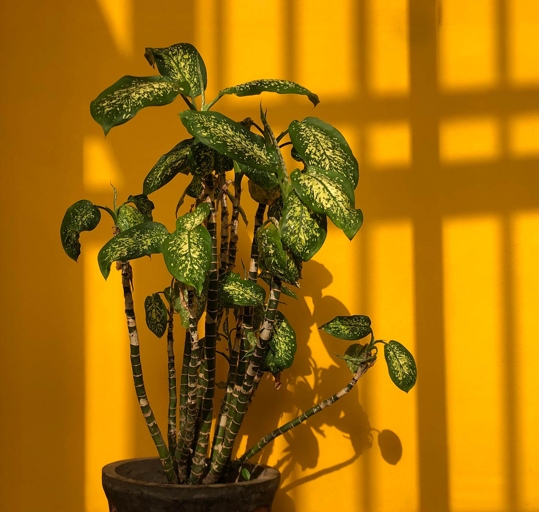
Cut the stem back to a healthy section and allow the cuttings to callous over before replanting. If the stem is already mushy, you can try to save the plant by trimming off the affected parts. With proper care, your Dieffenbachia should recover and continue to thrive.
Poor Growth
There are a few possible reasons for this: If you notice your Dieffenbachia plant isn’t growing as tall as it used to, or if it’s leaning to one side, it’s probably due to poor growth.
Dieffenbachia plants need bright, indirect light to thrive. The plant isn’t getting enough light. If yours is in a low-light spot, it’s no wonder it’s not growing well.
The plant is overwatered. If you think your plant is overwatered, check the roots to see if they’re mushy or discolored. Dieffenbachia plants are susceptible to root rot, so it’s important to let the soil dry out between waterings.
The plant is underwatered. On the other hand, if the soil is too dry, the plant will wilt and the leaves will turn brown. If you think your plant is underwatered, give it a good drink and see if it perks up.

With a little troubleshooting, you should be able to figure out the problem and get it back on track. If your Dieffenbachia plant isn’t growing well, don’t despair.
How to Not Over or Under Water Dieffenbachia
Allow the top inch of soil to dry out between watering. Dieffenbachias need to be kept moist, but not soggy. If your Dieffenbachia is falling over, it’s likely because it’s not getting enough water. Water less frequently in winter.

Dieffenbachias will also start to lean if they’re not getting enough light. Try staking it up with a bamboo stake or trellis. Place your plant in a spot where it will get bright, indirect light. If your Dieffenbachia is still leaning, it may be because it’s top-heavy.
Drafty Cold or Hot Air
This is usually due to drafty cold or hot air. However, this plant can sometimes start to lean over, or even fall over. A Dieffenbachia, or dumb cane, is a popular houseplant known for its large, glossy leaves.
If your Dieffenbachia is leaning or falling over, the first thing you should do is check the temperature of the room it is in. Move the plant to a more comfortable location and see if this solves the problem. If it is too cold or too hot, this can cause the plant to become stressed and start to lean.
If the pot does not have proper drainage, the roots of the plant can rot, causing the plant to fall over. Also, check the drainage of your pot to make sure that the plant is not sitting in water. These plants like to stay moist, so be sure to water regularly. If the temperature is not the issue, then it is likely that your Dieffenbachia is not getting enough water.
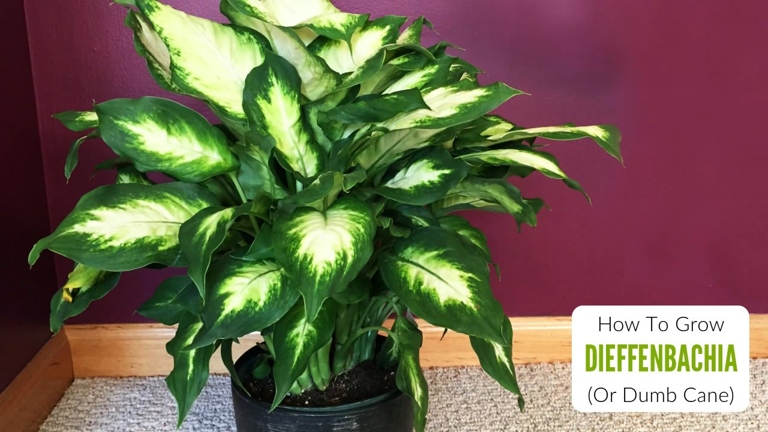
By following these tips, you can help your Dieffenbachia stay healthy and upright.
Wilting
Each of these can be easily remedied with a little bit of effort on your part. If your Dieffenbachia is wilting, it’s likely due to one of these four reasons: too much sun, not enough water, too much fertilizer, or pests.
Too Much Sun
If your Dieffenbachia is wilting and the leaves are turning yellow, it’s likely due to too much sun exposure. Dieffenbachias prefer indirect sunlight, so if yours is in a spot that gets direct sunlight for more than a few hours a day, it’s time to move it.
Not Enough Water
Dieffenbachias are tropical plants, so they need to be kept moist at all times. Be sure to water it thoroughly, until water is coming out of the drainage holes at the bottom of the pot. If the soil is dry to the touch, it’s time to water your plant.
Too Much Fertilizer

Cut back on the fertilizer, and flush the soil with water to remove any excess. If the leaves are wilting and the tips are turning brown, this is a sign of over-fertilization. If you’ve been fertilizing your Dieffenbachia regularly, it’s possible to give it too much of a good thing.
Pests
To get rid of them, you’ll need to treat the plant with an insecticide. These pests suck the sap out of the plant, causing it to wilt. If your Dieffenbachia is wilting and the leaves are covered in small, white bugs, it’s likely due to an infestation of mealybugs.
Bending over
There are several reasons why a dieffenbachia may start to lean, and fortunately, there are solutions for each issue. A dieffenbachia, or dumb cane, is a popular houseplant known for its large, glossy leaves. However, these plants are not immune to problems, and one of the most common is bending over.
Dieffenbachias need to be kept moist, but not soggy. If the soil is too dry, the plant will start to wilt. The best way to water a dieffenbachia is to stick your finger into the soil. If the soil is dry up to your first knuckle, it’s time to water. However, if the soil is too wet, the plant will start to bend over from the weight of the water. One of the most common causes of bending is incorrect watering.
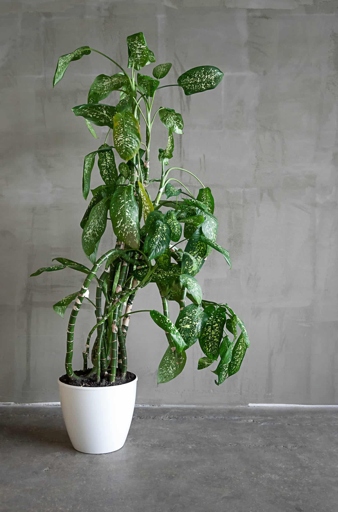
If they don’t get enough light, they will start to stretch and lean towards the light source. Bending can also be caused by too much or too little light. However, if they get too much light, the leaves will start to scorch and turn brown. Dieffenbachias prefer bright, indirect light. If your plant is leaning, check to see if it needs to be moved to a different location.
When this happens, the plant will start to lean to one side as the roots search for more space. This means that the roots have filled up the pot and have nowhere else to go. Finally, dieffenbachias can also bend over if they are pot-bound. Be sure to use fresh potting mix and water well. The solution is to repot the plant into a larger pot.
How to Prevent Temperature Stress
One of the most common reasons for a Dieffenbachia to fall over is due to temperature stress. There are a few things you can do to prevent temperature stress in your Dieffenbachia. The leaves of the plant will droop and the stem will become weak, causing the plant to topple over.
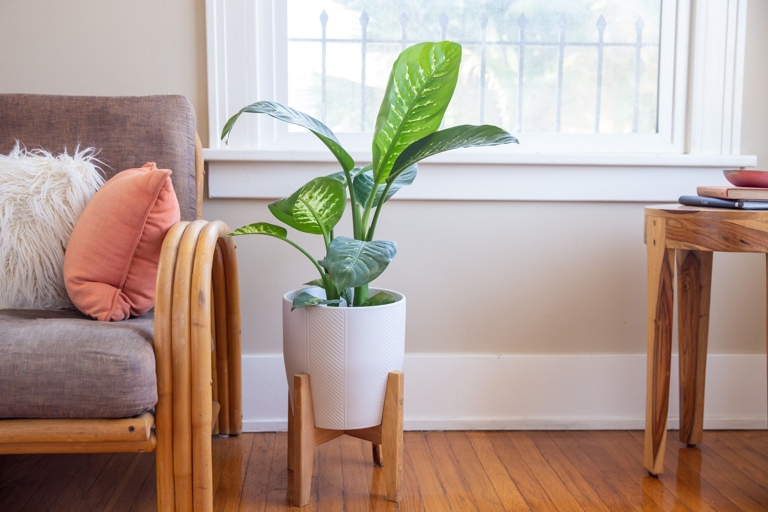
First, make sure you are not placing your Dieffenbachia in direct sunlight. The leaves of the plant are sensitive to sunlight and can scorch easily. If you must place your Dieffenbachia in direct sunlight, do so for only a few hours at a time.
If the temperature in your home fluctuates outside of this range, your Dieffenbachia is likely to experience stress. Second, make sure the temperature in your home is not too hot or too cold. Dieffenbachias prefer a temperature range of 65-75 degrees Fahrenheit.
Finally, make sure you are watering your Dieffenbachia regularly. Allow the top inch of soil to dry out between waterings. If you follow these simple tips, you can help prevent temperature stress in your Dieffenbachia. The plant needs to be kept moist, but not soggy.
Shock after Repotting
They can survive in a variety of conditions and don’t need a lot of care. If you’ve ever had a Dieffenbachia, you know that they are tough plants. But even the toughest plants can be shocked after repotting.
When you repot a Dieffenbachia, you are essentially giving it a new home. The plant will need time to adjust to its new environment and reestablish its root system. And like any move, it can be stressful for the plant.
During this adjustment period, it’s normal for the Dieffenbachia to lose some leaves and for its stems to droop. But if the leaves are yellowing and the plant is wilting, it’s a sign that the plant is in distress.
If your Dieffenbachia is showing signs of shock after repotting, don’t despair. There are a few things you can do to help the plant recover.

First, make sure that you’ve chosen the right pot. The pot should be just big enough to accommodate the root ball. If the pot is too big, the plant will be susceptible to root rot.
The soil should be moist but not soggy. Second, water the plant regularly but be sure not to overdo it.
With a little patience, your Dieffenbachia will bounce back and be as good as new. Finally, give the plant some time.
1. Proper Plant Relocation
Be sure to use fresh potting soil and water the plant well. Use a bamboo stake or other support to prop up the plant. If the plant is still falling over, you may need to stake it. When you see your Dieffenbachia plant falling over, it is likely that the roots are not properly anchored in the potting soil. If the roots are healthy, you can try to replant your Dieffenbachia in a pot that is slightly larger. Be sure to check the roots regularly and replant in a larger pot when necessary. The first step to take is to check the roots to see if they are healthy and white. If the roots are brown or black, they may be rotting. One of the most common reasons why Dieffenbachia plants fall over is because they are not properly rooted in the pot.
2. Reduce Watering
Dieffenbachias are native to tropical regions and prefer humid conditions. To reduce watering, allow the top inch of soil to dry out before watering again. You can also increase the humidity around your Dieffenbachia by misting it regularly or placing it on a pebble tray. However, too much water can cause the plant to rot. If your Dieffenbachia is falling over, it’s likely due to too much water.
3. Plant Assessment
It could also be that the plant is getting too much or too little water. Maybe the plant is top-heavy, or the pot is too small. If you notice your Dieffenbachia is falling over, it could be due to a number of reasons.
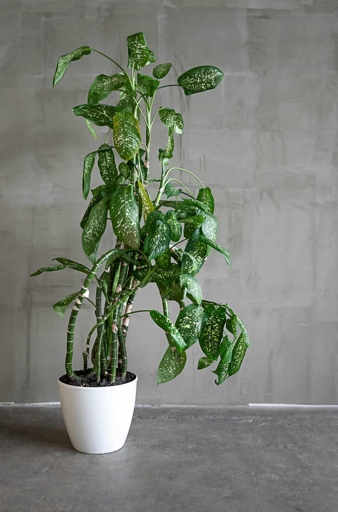
Is it top-heavy? Repotting it in a larger pot will give the roots room to grow and support the plant. If the pot is too small, the roots may be constricted and not able to support the plant. To assess the situation, start by looking at the plant. If so, you may need to stake it or put it in a larger pot.
Water the plant and feel the soil. Dieffenbachias like to be kept moist, but not soggy. Next, check the watering. If it’s still wet, wait a few days and check again. If it’s dry a few inches down, it’s time to water. Overwatering can cause the leaves to yellow and drop off, so it’s important to not let the plant sit in water.
By taking a close look at your Dieffenbachia and making some adjustments, you can get it back to looking its best.
4. Thorough Plant Care
If your Dieffenbachia is falling over, it is likely due to one of the following reasons: However, if a Dieffenbachia is not cared for properly, it can start to yellow and drop its leaves. A Dieffenbachia, or dumb cane, is a popular houseplant because it is easy to care for and tolerates low light.
To fix this, you will need to repot your Dieffenbachia into a larger pot. The pot is too small – A Dieffenbachia that is pot-bound will start to lean over as it grows. The roots are constricted and can’t support the weight of the plant.
To fix this, make sure you are only watering your Dieffenbachia when the top inch of soil is dry. This can cause the plant to lean over and eventually collapse. The plant is too wet – Dieffenbachias need to be kept moist, but not soggy. If the soil is too wet, the roots will start to rot.
The plant is too dry – If the soil is too dry, the leaves will start to droop and the plant will lean over. To fix this, water your Dieffenbachia more frequently.
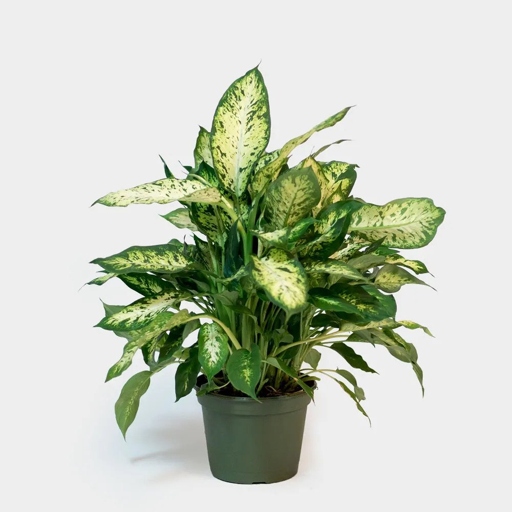
By making a few simple adjustments, you can get your Dieffenbachia back to looking its best. If you notice your Dieffenbachia starting to lean, take a look at the pot, the soil, and the watering schedule.
Bugs
With a little TLC, your Dieffenbachia should be back to standing tall in no time! Another possibility is that the plant is not getting enough water. Finally, Dieffenbachia plants are sensitive to drafts, so if you think there may be a draft near your plant, try moving it to a different location. To fix this, simply stake the plant to give it some support. Make sure to water your Dieffenbachia regularly, and if the soil is dry, give it a good watering. If you’re noticing your Dieffenbachia falling over, it’s likely due to one of a few reasons. First, the plant may be top-heavy.
Yellow Leaves with Honeydew
Move it to a spot where it will get bright, indirect light and the leaves should green up again. Dieffenbachia are native to the tropical rainforests of Central and South America, so they need bright, indirect light to thrive. If your plant is getting too much direct sun, the leaves will turn yellow. If your Dieffenbachia is dropping leaves or falling over, it’s likely due to too little light.
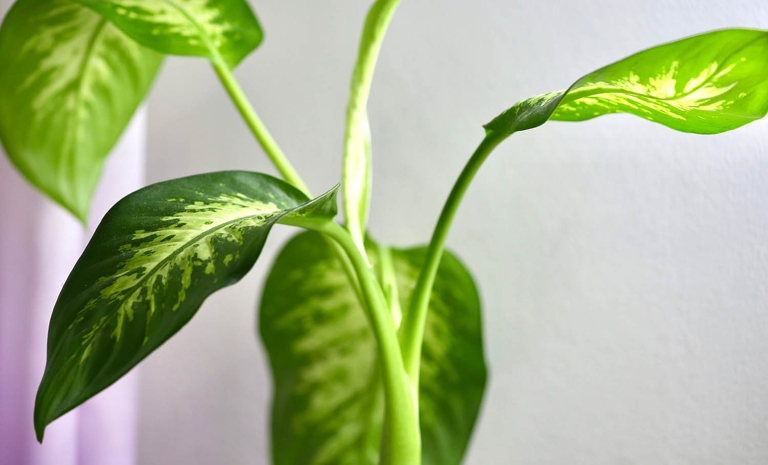
If the leaves are yellow and the plant is getting too much water, it could be a sign of root rot. If the leaves are yellow and the plant is not getting enough water, it will start to droop. Water your Dieffenbachia when the top inch of soil is dry. Allow the soil to dry out completely between waterings and reduce the amount of water you give it.
Faded Leaves
One possibility is that the plant is not getting enough light. If your Dieffenbachia’s leaves are looking a little worse for the wear, there are a few possible explanations. Another possibility is that the plant is getting too much direct sun, which can cause the leaves to bleach out. Dieffenbachias prefer bright, indirect light, so if yours is in a too-shady spot, the leaves may start to fade.
If your plant is getting the right amount of light but the leaves are still fading, it could be a sign of overwatering. Make sure you’re letting the soil dry out between waterings, and check the drainage to make sure the plant isn’t sitting in water. Dieffenbachias are sensitive to too much moisture, and their leaves will start to yellow and droop if they’re getting too much water.
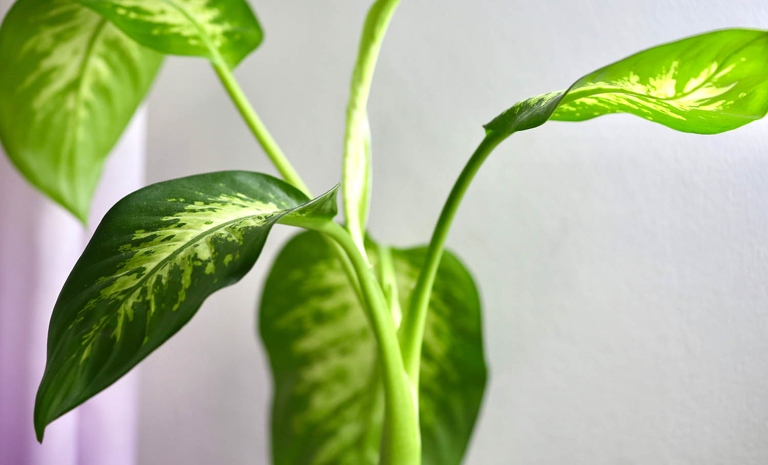
Try giving it a weak solution of liquid fertilizer every couple of weeks and see if that helps. Fading leaves can be a sign that the plant isn’t getting enough fertilizer. If you’ve ruled out both too much and too little water, the problem might be a lack of nutrients.
Poor Growth
One of the most common problems with Dieffenbachia is poor growth. If you suspect that your Dieffenbachia is not getting enough water, try giving it a deep watering once a week. Be sure to check the soil before watering to make sure it is dry. If you think your Dieffenbachia is not getting enough light, try moving it to a brighter location. If the plant is still not growing well, it may be necessary to repot it in fresh, well-drained soil. This can be caused by several factors, including too much or too little water, too much or too little light, and poor drainage. The leaves of the plant may turn yellow and the stems may become thin and weak. If the soil is too wet, the roots of the plant may rot.
How to Control Bug Infestation on Dieffenbachia
Once the bugs are gone, your Dieffenbachia should start to recover. You may need to repeat this treatment a few times to completely get rid of the pests. To get rid of the bugs, start by spraying the plant with an insecticidal soap. These pests can weaken the plant, causing it to topple over. Be sure to cover the entire plant, including the undersides of the leaves. If your Dieffenbachia is falling over, it’s likely due to a bug infestation. You can also try using a neem oil solution, which is a natural insecticide.
Disease
If you notice your Dieffenbachia is falling over, it’s important to act quickly. This is because the plant is likely suffering from a disease. There are a few diseases that can cause Dieffenbachia to fall over, including root rot and stem rot.
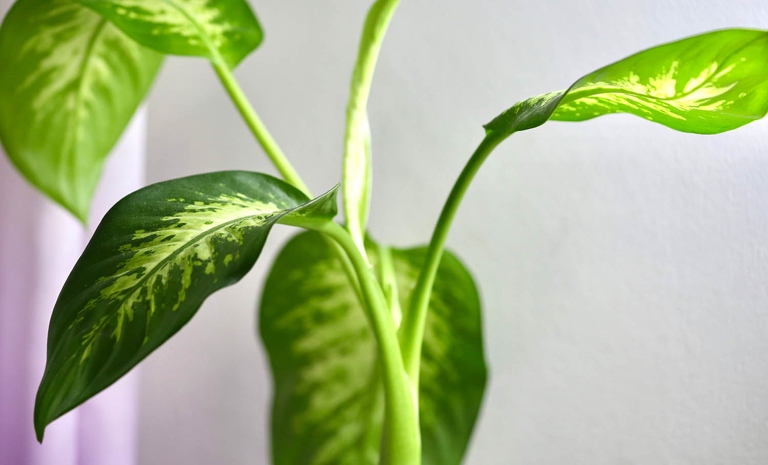
Stem rot is caused by a fungus that attacks the plant’s stem. This can happen if the plant is kept in too much humidity. Root rot is caused by a build-up of water in the soil. This can happen if the plant is watered too often or if the pot doesn’t have proper drainage.
If you think your Dieffenbachia is suffering from a disease, the best course of action is to take it to a local nursery or gardening center. The experts there will be able to diagnose the problem and recommend a solution.
How to Treat Diseases Attacking Dumb Canes
Dumb canes are a popular houseplant, but they’re not immune to disease. Here are some tips on how to treat diseases that may attack your dumb cane.
This is caused by too much water and can lead to the plant falling over. One of the most common diseases that affect dumb canes is root rot. Once the roots are dry, you can replant the dumb cane in fresh potting mix. To treat root rot, you need to remove the plant from the pot and allow the roots to dry out.

You can also spray the plant with a fungicide or bactericide. Another disease that can affect dumb canes is leaf spot. To treat leaf spot, you need to remove the affected leaves and dispose of them. This is caused by fungi or bacteria and can lead to brown or black spots on the leaves.
With a little treatment, your plant will be back to its healthy self in no time. If your dumb cane is affected by a disease, don’t despair.
Final Words
When your Dieffenbachia starts to flop over, it can be frustrating. But don’t worry, there are a few things you can do to help perk it back up.
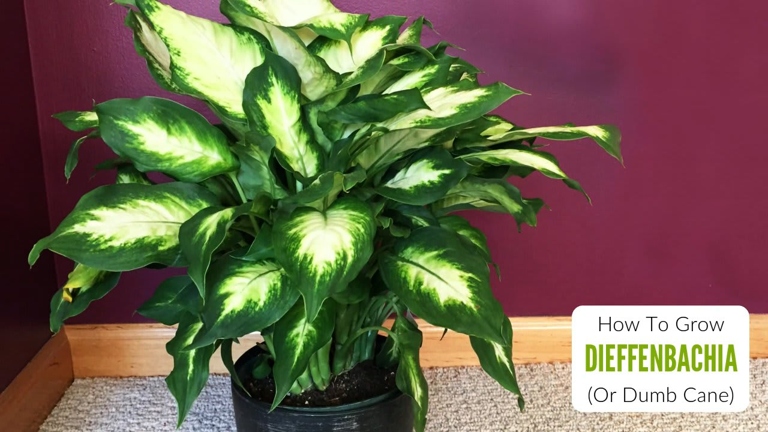
First, take a look at where you’re keeping your Dieffenbachia. If it’s in a spot that doesn’t get much light, that could be why it’s drooping. Move it to a brighter location and see if that does the trick.
If the soil is soggy, try letting it dry out a bit before watering again. If your Dieffenbachia is getting enough light but it’s still sagging, the problem could be that the soil is too wet or too dry. If it’s bone dry, water it well and see if that helps. Stick your finger into the soil to check the moisture level.
If you’ve tried all of these things and your Dieffenbachia is still looking sad, it might be time to give it a little boost with some plant food. Follow the directions on the package and give your Dieffenbachia the nutrients it needs to perky back up.
Frequently Asked Questions
1. Why is my Dieffenbachia falling over?
There are several possible reasons for your Dieffenbachia to fall over. It could be due to overwatering, which can lead to root rot. Another possibility is that the plant is not getting enough light, causing it to become leggy and fall over.
2. What are the signs of overwatering?
If your Dieffenbachia is overwatered, the leaves will start to yellow and drop off. The stem may also start to soften and collapse.
3. How do I know if my plant is getting enough light?
If your Dieffenbachia is not getting enough light, it will become leggy and fall over. The leaves will also start to turn pale.
4. How do I water my Dieffenbachia?
Water your Dieffenbachia when the top inch of soil is dry. Allow the water to drain completely before putting the plant back in its pot.
5. How often should I fertilize my Dieffenbachia?
Fertilize your Dieffenbachia every two weeks during the growing season. Use a balanced fertilizer that contains nitrogen, phosphorus, and potassium.
Final thoughts
If your Dieffenbachia is falling over, it is likely due to one of the following reasons: the plant is too large for its pot, the pot does not have drainage holes, or the plant is not getting enough light. The solution to each of these problems is relatively simple: repot the plant in a larger pot with drainage holes, or move it to a location that gets more light. With a little bit of care, your Dieffenbachia will be standing tall in no time!
